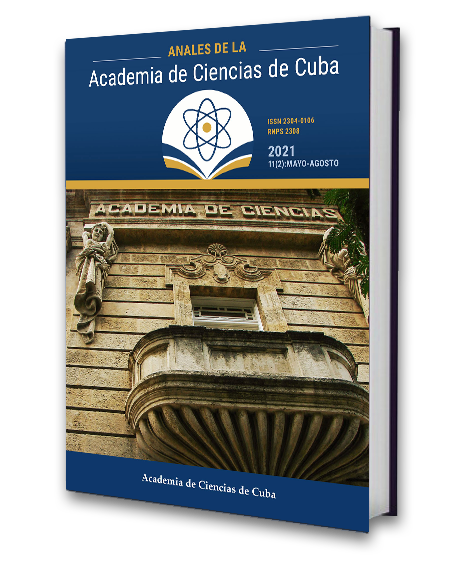460 Cuba Street, monument to Cuban Science
Keywords:
Science Academy, scientific heritage, museumAbstract
Introduction: The Royal Academy of Medical, Physical and Natural Sciences of Havana was founded in 1861. It occupied the convent of Saint Augustine from 1868 to 1898. With the arrival of the Republic, the academy lost the denomination of royal but it kept the old building that was rebuilt from the ground. In 1962, the institution disappeared and the Museum of History of Sciences Carlos J. Finlay was founded and occupied the building, adapting it to the new function. In 2011, the Museum was closed down. The Cuban Academy of Sciences whose formation process started in 1961 moved into the building in 2012. Objectives: To describe the uses of the building from the beginning to the present day; to characterize the Royal Academy of Sciences, to review the nature and importance of the heritage that the institution harbors.Methods: Bibliographical and documental review. Observation and photography.
Results: The Royal Academy of Sciences was the result of the development of science in Cuba and the expression of the Cuban nationality. There is practically nothing kept from the original building, but there is much scientific heritage related to the Royal Academy. The academy of Sciences of Havana constructed practically a new building according to its needs. The Museum of History of Sciences Carlos J. Finlay was the creator of the present-day features of the building. Conclusions: The heritage of the first academies of sciences, particularly the Royal one, is supposed to be conserved and socialized in a museum to be founded.
Downloads
Downloads
Published
How to Cite
Issue
Section
License
The journal Anales de la Academia de Ciencias de Cuba protects copyright, and operates with a Creative Commons License 4.0 (Creative Commons Attribution-NonCommercial License 4.0). By publishing in it, authors allow themselves to copy, reproduce, distribute, publicly communicate their work and generate derivative works, as long as the original author is cited and acknowledged. They do not allow, however, the use of the original work for commercial or lucrative purposes.
The authors authorize the publication of their writings, retaining the authorship rights, and assigning and transferring to the magazine all the rights protected by the intellectual property laws that govern in Cuba, which imply editing to disseminate the work.
Authors may establish additional agreements for the non-exclusive distribution of the version of the work published in the journal (for example, placing it in an institutional repository or publishing it in a book), with recognition of having been first published in this journal.
To learn more, see https://creativecommons.org






